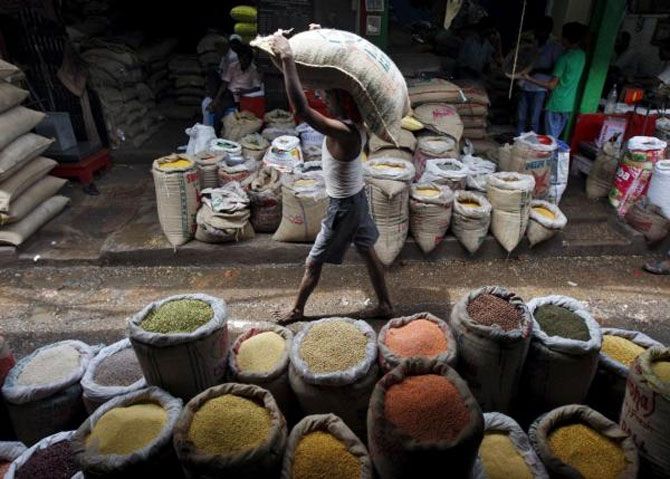The 2015 spike in dal prices has been mainly due to three consecutive droughts in main growing areas, hurting overall production, and elevated global prices making imports costly.
 The recent spike in pulses prices, primarily that of tur (arhar) - when rates touched Rs 200 a kg - was not a one-off, says a recent analysis by CRISIL.
The recent spike in pulses prices, primarily that of tur (arhar) - when rates touched Rs 200 a kg - was not a one-off, says a recent analysis by CRISIL.
According to the rating agency, there was inflation in pulses every third year between 2004-05 and 2014-15, owing to a variety of reasons, especially supply disruption.
However, the peak seen in pulses inflation in 2015 was higher than the previous two peaks. CRISIL says both supply and demand factors are responsible for keeping the price level high.
Supply constraints arise from lower product supplies, while demand factors arise from higher incomes (especially in rural areas) which have caused a shift in food consumption from cereals to more protein-based items. On average, an Indian spends five per cent of his food expenditure on pulses.
The 2015 spike has been mainly due to three consecutive droughts in main growing areas, hurting overall production, and elevated global prices making imports costly.
Madhya Pradesh, Maharashtra, Rajasthan and Uttar Pradesh account for around 70 per cent of India's total pulses production.
Of these states, all except Rajasthan have seen acute monsoon deficiency in four out of the past eight years, badly impacting pulses production.
Irrigation is of little help as only 16 per cent of total area under pulses in India is under irrigation.
The analysis shows that pulses supply in the country is inadequate as production has remained constant since 2004, while demand has accelerated, leading to a decline in the per-capita availability of pulses and a spiral in prices.
Pulses accounts for around 20 per cent of area under foodgrains production, but less than 10 per cent foodgrain output.
Over the past 20 years, output has grown by an average of two per cent, while acreage has grown even lesser at 0.8 per cent, which is why yield rose by only 0.9 per cent during the period.








